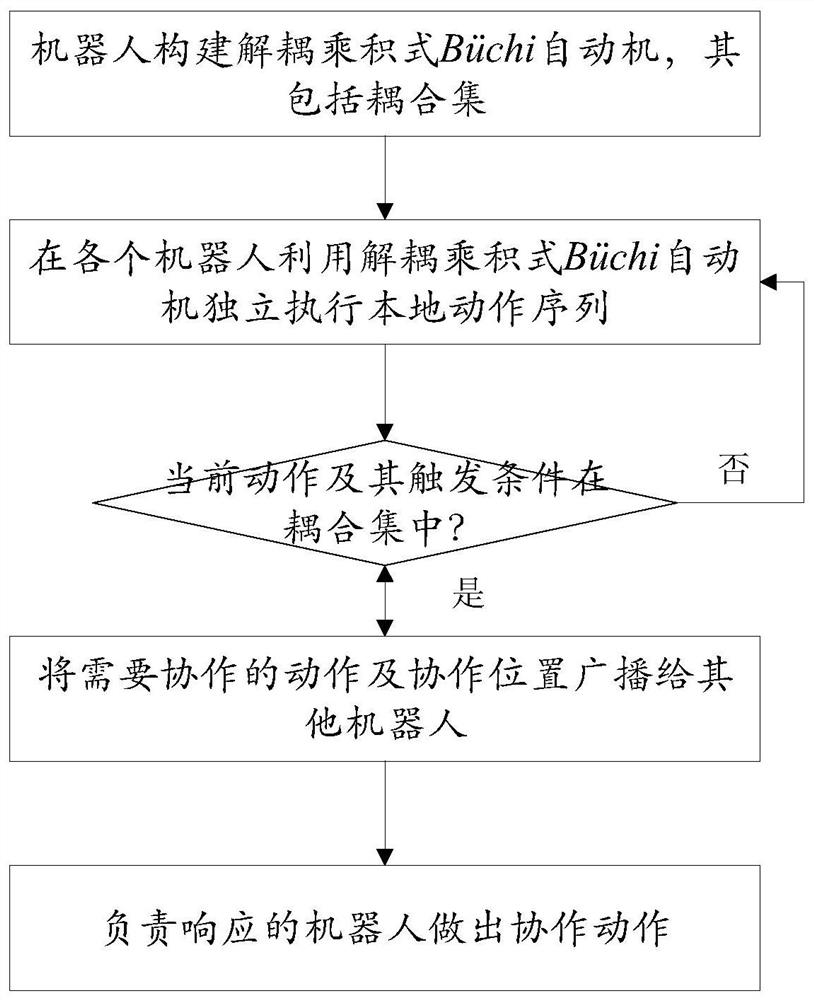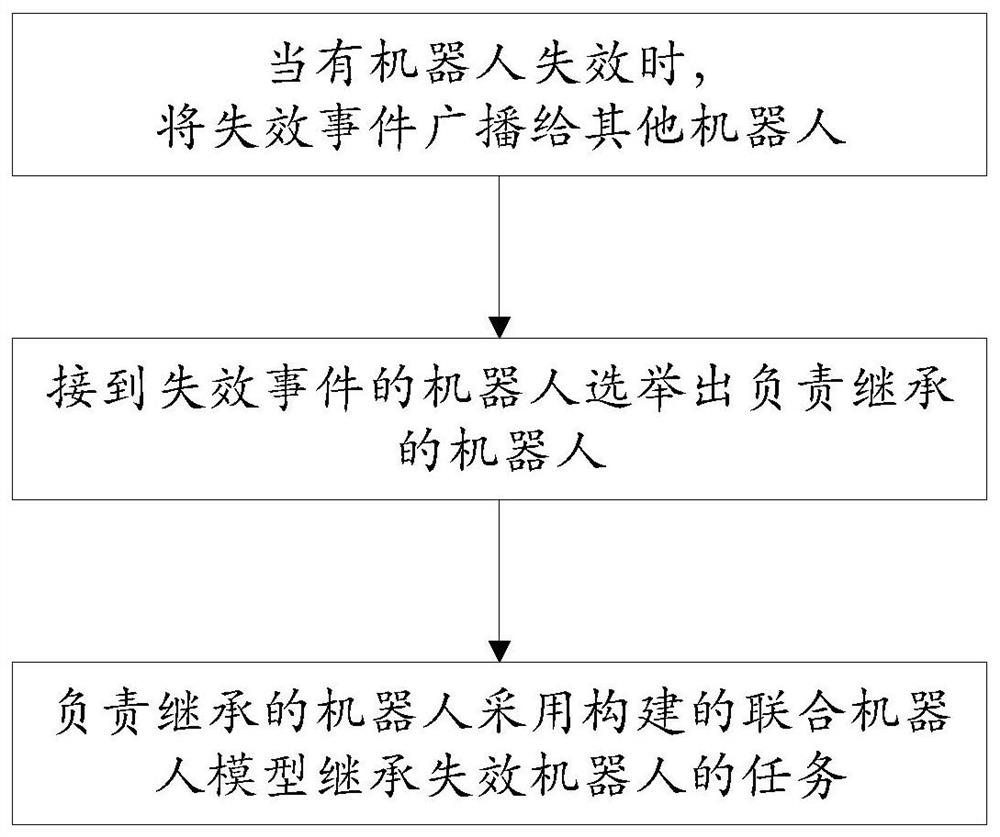A distributed multi-agent task cooperation method based on linear temporal logic
A linear sequential logic and multi-agent technology, applied in data processing applications, instruments, calculations, etc., can solve problems such as multi-agent task decoupling, achieve the effects of reducing time complexity, accelerating speed, and improving coping capabilities
- Summary
- Abstract
- Description
- Claims
- Application Information
AI Technical Summary
Problems solved by technology
Method used
Image
Examples
Embodiment Construction
[0043] The following description takes a robot as an agent as an example.
[0044] see figure 1 and figure 2 , the distributed multi-robot task cooperation method based on linear sequential logic of the present invention comprises the following steps:
[0045] ●Under normal working conditions, each robot independently constructs its own decoupling product Büchi automaton, and constructs its own action sequence through the automaton. The decoupled product Büchi automata here is the result of adding coupled sets to the product Büchi automata. The coupling set records the coupling edge and its triggering conditions, and the endpoints of the coupling edge correspond to the actions that require cooperation.
[0046] When each robot independently executes the local action sequence using the decoupling product Büchi automaton, determine whether the currently executed action and its corresponding trigger condition are in the coupling set, and if so, the currently executed action i...
PUM
 Login to View More
Login to View More Abstract
Description
Claims
Application Information
 Login to View More
Login to View More - R&D
- Intellectual Property
- Life Sciences
- Materials
- Tech Scout
- Unparalleled Data Quality
- Higher Quality Content
- 60% Fewer Hallucinations
Browse by: Latest US Patents, China's latest patents, Technical Efficacy Thesaurus, Application Domain, Technology Topic, Popular Technical Reports.
© 2025 PatSnap. All rights reserved.Legal|Privacy policy|Modern Slavery Act Transparency Statement|Sitemap|About US| Contact US: help@patsnap.com



